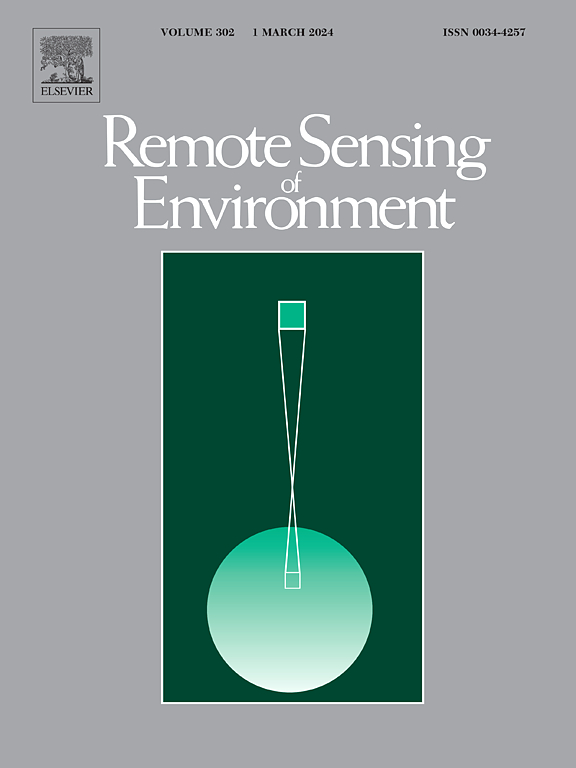Dynamic vegetation parameter retrieval algorithm for SMAP L-band radiometer observations
IF 11.1
1区 地球科学
Q1 ENVIRONMENTAL SCIENCES
引用次数: 0
Abstract
Vegetation Optical Depth (VOD), obtained from passive microwave sensors, quantifies Vegetation Water Content (VWC) and complements conventional vegetation indices. Recent studies on Soil Moisture (SM) and VOD retrieval algorithms identified that VOD is more susceptible to errors due to the Radiative Transfer Model (RTM) and its parameterization than SM. The present work aims to address this limitation. We initially characterized the error propagation from ω and h parameters in VOD through synthetic experiments. These experiments also indicate notable propagation of errors from assuming a temporally constant ω in VOD retrievals, which could be resolved using a time-varying ω parameter.
To improve the VOD characterization, we proposed a Dynamic Vegetation Parameter retrieval Algorithm (DVPA) to retrieve VOD and ω simultaneously, along with a temporally constant h parameter applied to L-band SMAP brightness temperatures. DPVA is based on the Two-Stream emission model (2S-EM) RTM. Retrievals are obtained using a novel multi-temporal inversion coupled with a regularization scheme. SMAP Level-3 SM is supplied as one of the critical inputs. DVPA, as a proof-of-concept, is applied to ten reference sites with varying vegetation conditions. The retrieved VOD and ω from DVPA are compared with optical vegetation indices and SMAP baseline VOD product (Regularized Dual Channel Algorithm-RDCA). DVPA VOD estimates outperform SMAP RDCA VOD in terms of correlation (R) and lagged correlation with vegetation indices. Regularization ensured optimum filtering of retrieval noise from the VOD retrievals. Retrieval of dynamic ω helped to resolve errors in VOD, resulting in improved correspondence with vegetation growth patterns compared to SMAP baseline VOD retrievals. Given its generic structure, DPVA is scalable and applies to other passive microwave sensors.
求助全文
约1分钟内获得全文
求助全文
来源期刊

Remote Sensing of Environment
环境科学-成像科学与照相技术
CiteScore
25.10
自引率
8.90%
发文量
455
审稿时长
53 days
期刊介绍:
Remote Sensing of Environment (RSE) serves the Earth observation community by disseminating results on the theory, science, applications, and technology that contribute to advancing the field of remote sensing. With a thoroughly interdisciplinary approach, RSE encompasses terrestrial, oceanic, and atmospheric sensing.
The journal emphasizes biophysical and quantitative approaches to remote sensing at local to global scales, covering a diverse range of applications and techniques.
RSE serves as a vital platform for the exchange of knowledge and advancements in the dynamic field of remote sensing.
 求助内容:
求助内容: 应助结果提醒方式:
应助结果提醒方式:


